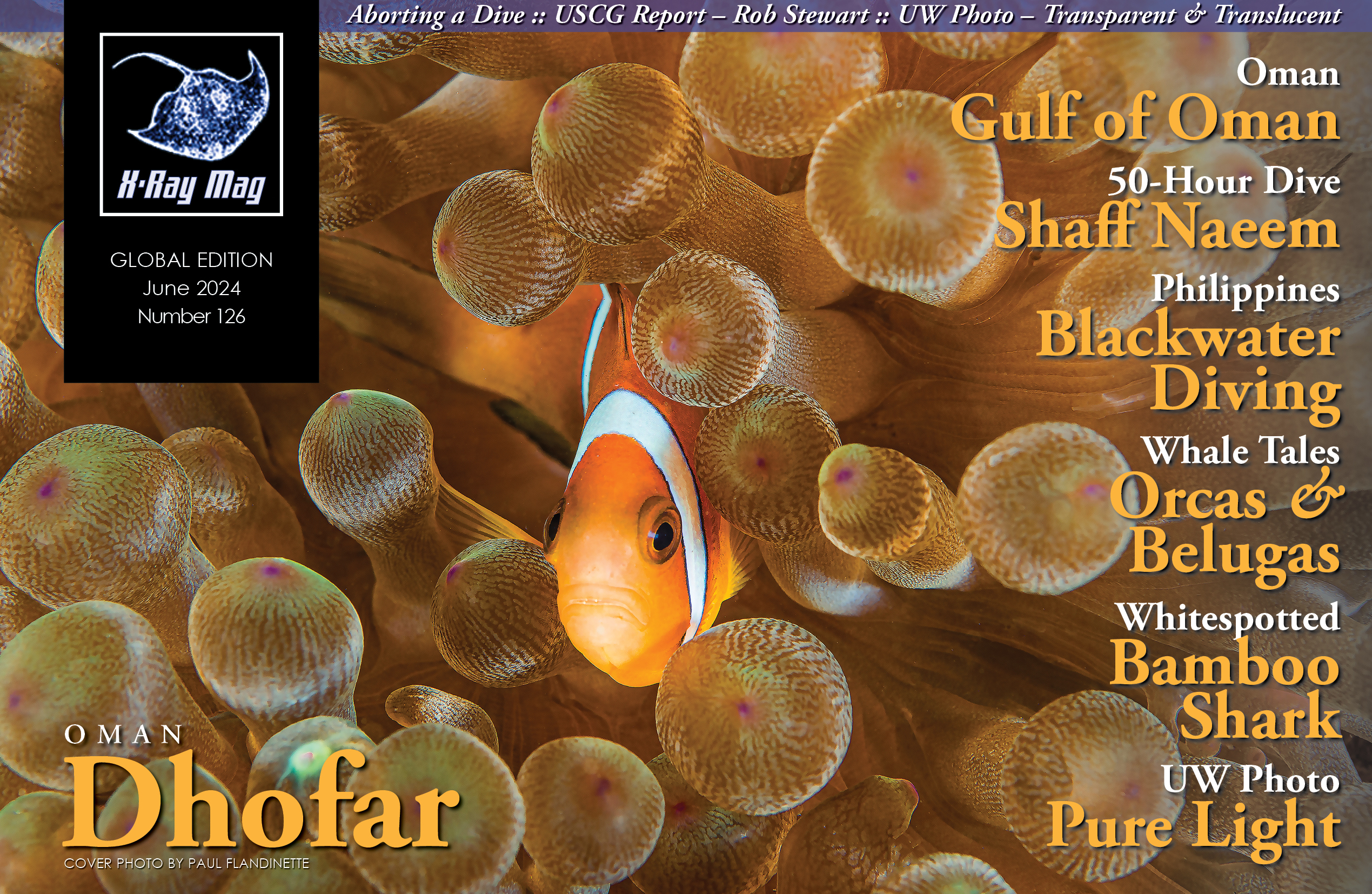Whitespotted bamboo sharks, the elusive dwellers of southeast Asia’s marine realm, are not easy to find. Maybe it is just that they are relatively scarce. Or maybe it is simply because during the daytime, they rest in deep crevices. Either way, they are rarely seen. Malcolm Nobbs takes us to Kannoura Bay in Japan in search of this rare shark.
Contributed by
In the tapestry of the ocean, the whitespotted bamboo shark is a study in elegance and adaptation. They are nocturnal phantoms with elongated silhouettes. With their finery of lobed fins, rounded snouts and skin adorned with a constellation of white and black spots, they glide the reef in search of bony fishes and crustaceans. Reaching lengths of almost one metre, they are thought to live for up to a quarter of a century.

Where to see them
In the waters off Malapascua Island in the Philippines, they have occasionally been sighted in depths of 10 to 20m. Another possible haven for these enigmatic creatures is thought to be Kannoura Bay in the eastern reaches of Kōchi Prefecture, Japan. Here, from July until the following March, they are said to reside offshore in depths of 50 to 70m and come to shallower waters to mate from April to July, with this mating aggregation peaking in May and June each year.

Off to Japan
Together with Andy Murch of Big Fish Expeditions, I travelled to Kannoura Bay in May, hoping that these stories were true. We met up with Norihiro Fukui, the owner of Kannoura Bay’s dive centre, Oranku Divers. Norihiro told us that the rumours were spot on, and that he had even seen between 30 and 40 whitespotted bamboo sharks on a single dive there.

He believes that this bay, with its tranquil waters and gentle undulations, offers a unique sanctuary for these sharks. It is a cradle of new life where predators dare not venture. The sharks’ eggs find a place to thrive here, caressed by the nurturing waves and moderate seawater circulation. After 110 to 135 days, the hatchlings emerge from their capsules, a new generation ready to glide through the waters of the sea.
Keeping our fingers crossed, Andy and I hit the water and within a few minutes, we spotted our first whitespotted bamboo shark. Then another, then another. Elsewhere they are rarely seen by scuba divers, but it turns out that in Kannoura Bay, from May to June, they are easy to find. ■
For more information, visit: orankudivers.com
Based in Nelson Bay, New South Wales, Australia, UK native Malcolm Nobbs is a widely published underwater photographer and regular contributor to both Australian and dive magazines around the world. Formerly an active member of the British Society of Underwater Photographers (BSoUP), he moved to Australia in 2009, after penning his first underwater magazine article. Teaming up with Jamie Watts in 2013, the pair have produced a steady stream of articles. Over the years, Nobbs has steadily expanded his website into one of the world’s largest scuba-related websites, with over 10,000 categorised and searchable marine life images, numerous dive site location reports, published works and videos. Visit: malcolmnobbs.com

FACTS ABOUT THE WHITESPOTTED BAMBOO SHARK
Edited by G. Symes
- The whitespotted bamboo shark (Chiloscyllium plagiosum) is a nocturnal species of carpet shark that is harmless to humans and can grow up to 93cm in length. Notable for its dorsal fins with convex posterior margins, the shark is easily identified by its distinct colour pattern of purple and pink spots on a white body with dark bands. They typically rest on the seabed, supported by their bent pectoral fins, and have a distinct dorsal fin that influences their habitat choice and movement.
-
Image
A mating pair of whitespotted bamboo sharks. Photo by Norihiro Fukui. Whitespotted bamboo sharks are found across the coral reefs of the Pacific Ocean, from Japan to India, including the coastal areas of Indonesia. They are primarily nocturnal feeders, preying on small fish and invertebrates.
- These sharks are equipped with relatively undifferentiated teeth, which are adapted for both grasping soft prey, allowing the teeth to sink into the flesh, and crushing hard prey by pivoting backwards to protect the tips and form a plate for crushing crabs.
- As benthic predators, they hunt near the sea-bottom, unlike pelagic sharks, and employ electroreceptors on their snout to detect prey hidden in sand and mud. During the wet seasons, the juveniles require a higher intake of carbon than the adults.
- Reproduction in whitespotted bamboo sharks is through egg-laying, with eggs measuring about five inches (~13cm) and hatching within 14 to 15 weeks. The hatchlings emerge at around six inches (~15cm) long, showcasing the shark’s unique reproductive capabilities. ■
SOURCE: Wikipedia






























